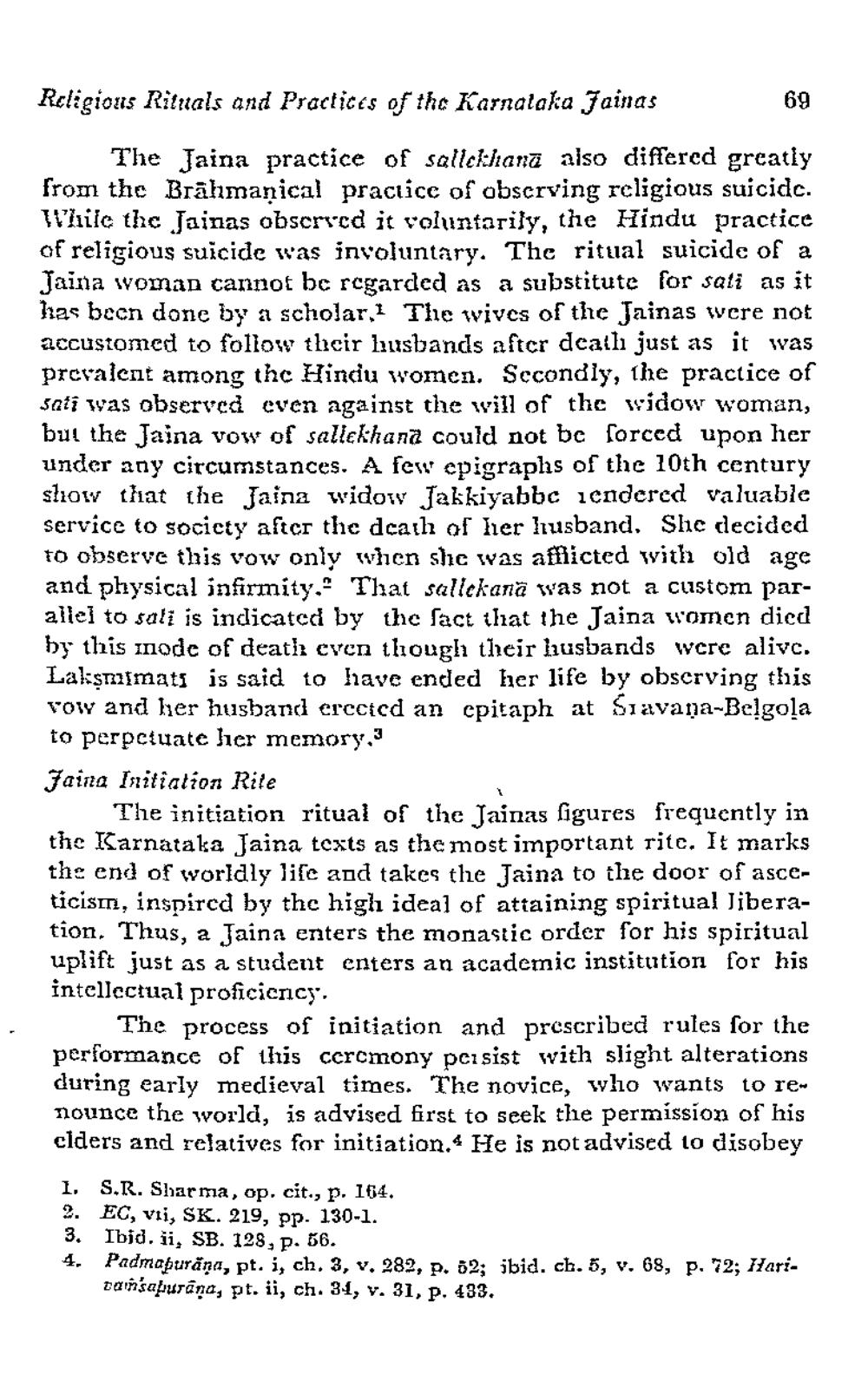________________
Religious Rituals and Practices of the Karnalaka Jainas
69
The Jaina practice of sallchhanā also differed greatly from the Brāhmaṇical practice of obscrving religious suicide. Wlıile thc Jainas observed it voluntarily, the Hindu practice of religious suicide was involuntary. The ritual suicide of a Jaina woman cannot be regarded as a substitute for sali as it has been done by a scholar, 2 The wives of the Jainas were not accustomed to follow their husbands aftcr death just as it was prcraicnt among the Hinciu women. Secondly, the practice of sati was observed even against the will of the widow woman, but the Jaina vow of sallekhana could not be forced upon her under any circumstances. A few epigraphs of the 20th century show that the Jaina widow Jakkiyabbc icndered valuable service to socicty after the death of her husband. She decided to observe this vow only when she was afflicted with old age and physical infirmity.” That sallekana was not a custom parallel to sali is indicated by the fact that the Jaina women died hy this inode of death even though their husbands were alivc. Lakşmismati is said to have ended her life by observing this row and her husband crccted an epitaph at Siavana-Belgola to perpctuate lier memory Jaina Initiation Rile
The initiation ritual of the Jainas figures frequently in the Karnataka Jaina texts as the most important rite. It marks the end of worldly life and takes the Jaina to the door of asceticism, inspired by the high ideal of attaining spiritual Jiberation. Thus, a Jaina enters the monastic order for his spiritual uplift just as a student enters an academic institution for his intellectual proficiency.
The process of initiation and prescribed rules for the performance of this ceremony peisist with slight alterations during early medieval times. The novice, who wants to renounce the world, is advised first to seek the permission of his clders and relatives for initiation. He is not advised to disobey
1. S.R. Sharma, op. cit., p. 164. 2. EC, vii, SK. 219, pp. 130-1. 3. Ibid. ii, SB. 128, p. 56. 4. Padmapuräna, pt. i, ch. 2, v. 282, p. 52; ibid. ch. 5, v. 68, p. 72; Hari
tansapurana, pt. ii, ch. 31, v. 31, p. 433.




